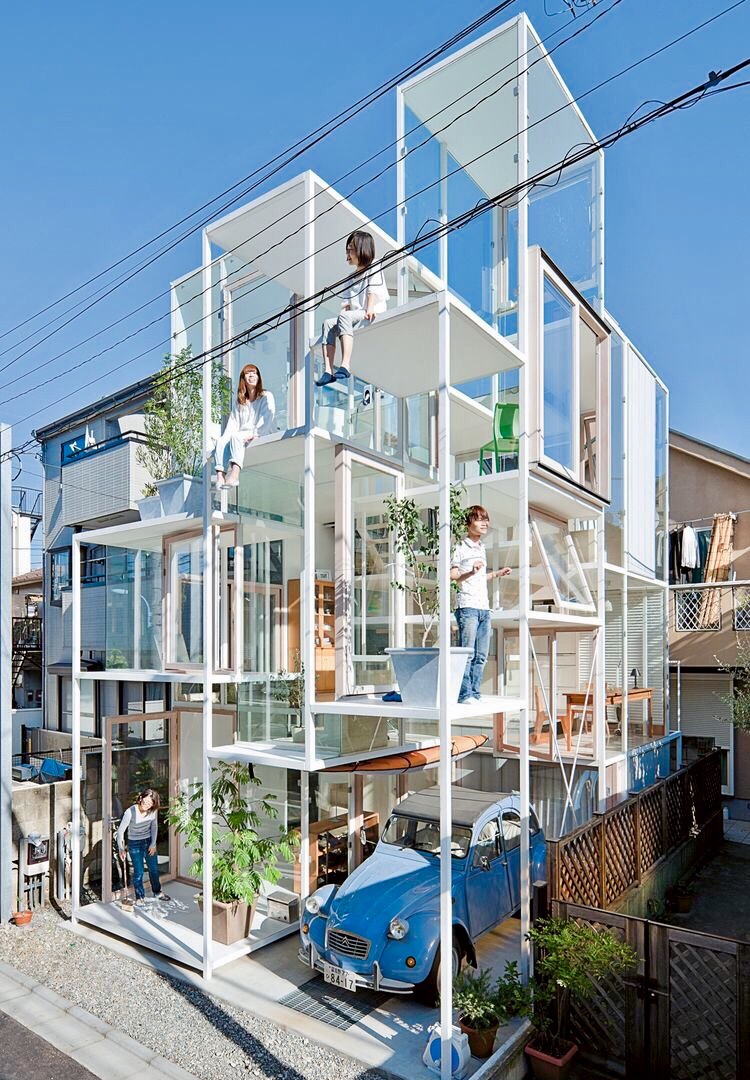The 8 Coolest Buildings In japan
Limited space and high land prices have prompted Japanese architects to think well outside the box. Surprise is the watchword – vegetables sprout from rooftops, walls disappear entirely and buildings seem to float on water. These are the most innovative structures in Japan.
House NA in Tokyo
Sou Fujimoto’s wall-less home, House NA, is a three-storey house divided into staggered platforms. It has enough room for a library, a roof terrace and even a garage.
#7.
Garden and House, Tokyo
Ryue Nishizawa’s Garden and House squeezes five single-room storeys into an area four metres wide.
#6.
Bird’s Nest Atami in Shizuoka
Hiroshi Nakamura’s Bird’s Nest Atami takes a traditional tea house 10 metres up into a 300-year-old camphor tree, while keeping it entirely separate on a steel trellis.
#5.
Nakagin Capsule Tower in Shimbashi, Tokyo
The Japanese tapped into the idea of micro-living long before the tiny house movement became fashionable. In the 1970s, Kisho Kurokawa’s Nakagin Capsule Tower broke new ground with its 140 minuscule capsules plugged into a central core. They contain compact apartments, storage areas and office space.
#4.
Church on the Water in Shimukappu-mura
Two overlapping cubes connected by a curved staircase shape Tadao Ando’s Church on the Water. Religious icons are replaced by stark concrete walls and a spectacular lake view.
#3.
Tower of Winds in Yokohama
Japan’s first interactive structure is Toyo Ito’s perforated, aluminium-clad Tower of Winds. It changes colour thanks to wind- and sound-sensitive lamps and neon rings.
In Shizuoka, architect Issei Suma challenges domestic design to create a retirement home out of teepee-shaped wooden huts. The complex is made up of five structures which contain a kitchen, a bedroom, a bathroom, storage areas and a spiral-shaped swimming pool.
#1.
Leek House in Machida, Tokyo
Among Japan’s most innovative domestic designs is the surreal Leek House by Terunobu Fujimori, with its rows of sprouting leeks in the roof.

